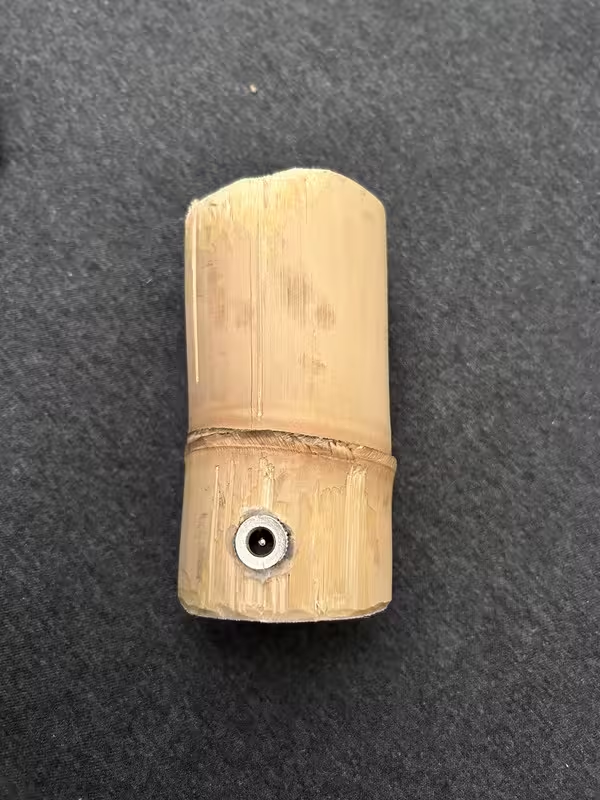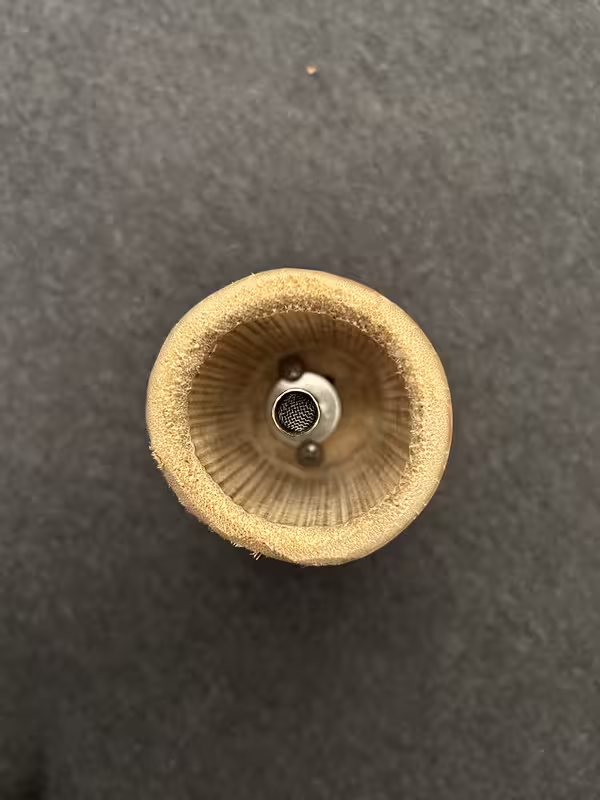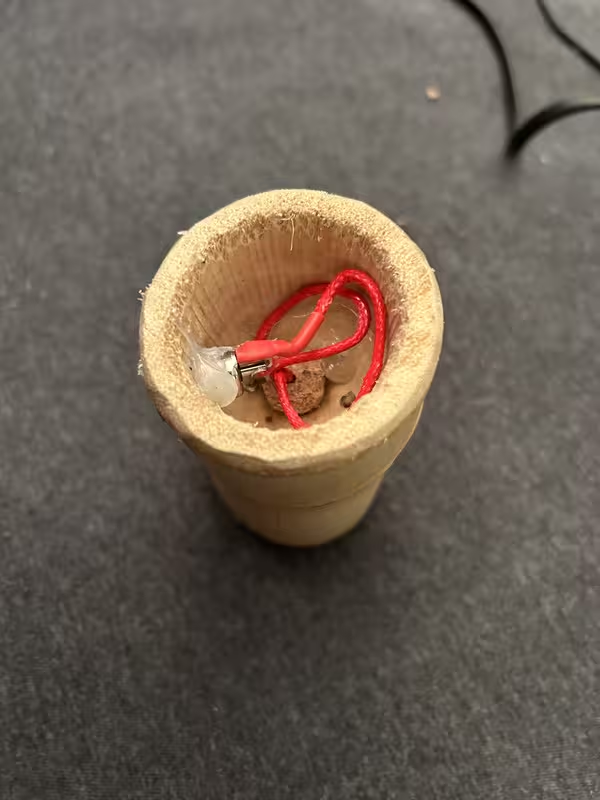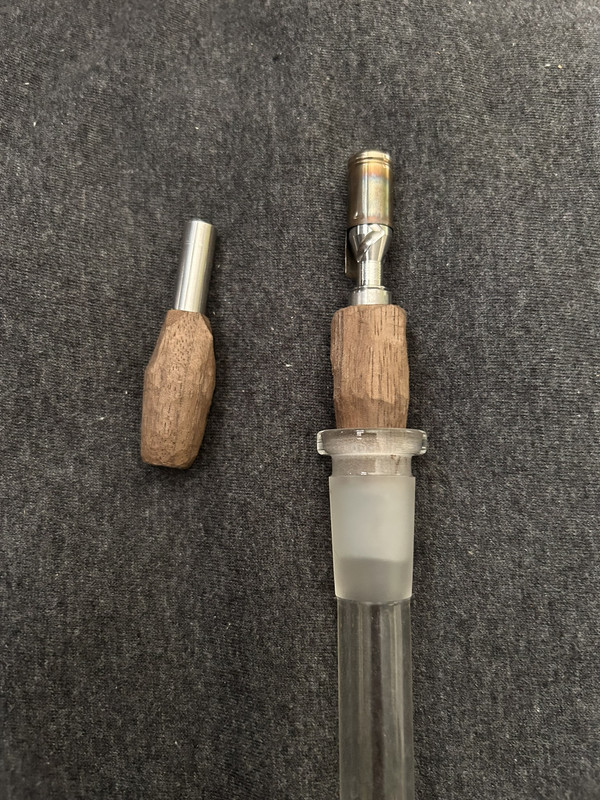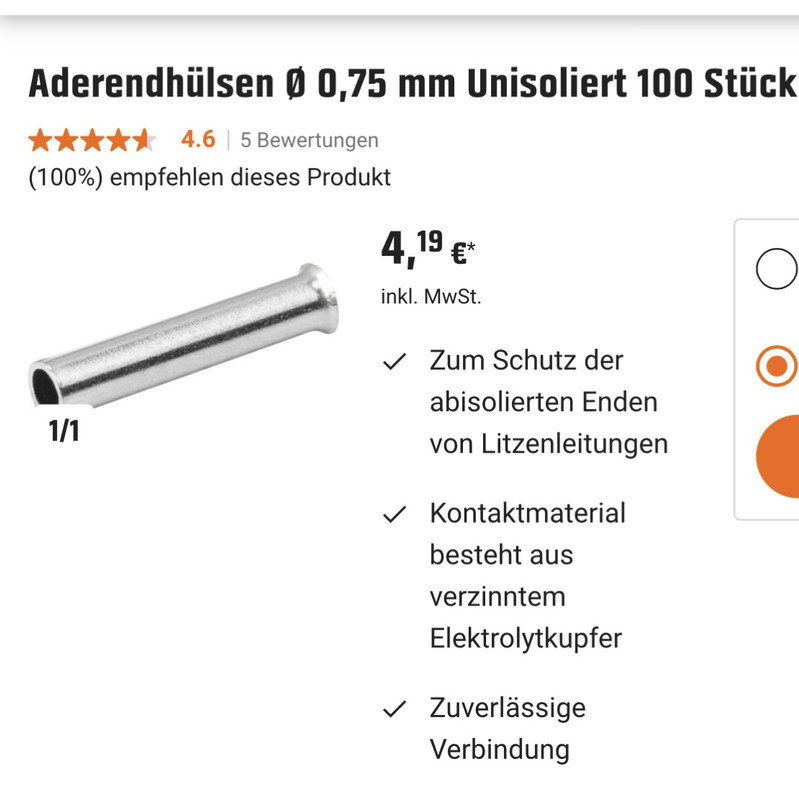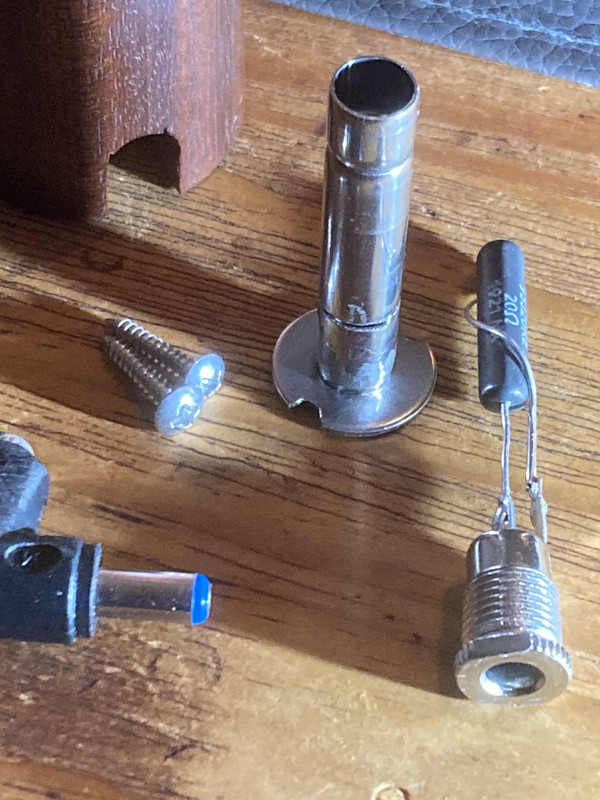Looks great. You inspire and have taught some of us well. Such a great tool that flies under the radar. I like the slightly larger diameter heater cover at 7/16" outside diameter. Also through water or a dimpled j-hook for cooling. My favorite device.
Thanks

. The idea for connecting the tubing to the base plate/washer in that way comes from Alan again, of course. As you already said, he's admirable open in how he constructs his HI in his thread and the MasterJedHI is a virtual firework of ideas

, that are often so simple (in the best possible way), but most effective.
I also really enjoy working with the sample of UD cores right now,(which are great, btw), Dave so kindly provided to Brainy and me


. It's just, that producing them at home would require some serious welding & laser cutting equipment and so isn't done so easily.
I really like the three Logs, you've done there. Especially the third one, with the base done like the two part/square HI


.
I use 11mm OD/10mm ID tubing here, to reproduce the wider 7/16" heater cover, as the'inchy stuff' is a bit hard to come by, in EU country. And an M10 ss washer (width: 20mm, hole: 10.5mm, thickness: ~1mm) for the base. Here is one in the other padauk body, Brainy did for me. It's a bit shorter, though. Only 4cm in hight.
Coming back to the UD cores... I finished the Cardboard Alpha today

.
Word to the wise: that ready made spruce plugs/disks I got me there to create the base puck, are not so ideal. Very soft wood, that also easily splits and splinters when treated the wrong way. Broke two disks by just trying to use M3 16mm screws for fastening the heater cover. The M2 ones worked out then, but barely. So better cut/turn a fitting disk from some solid wood

Also better to use the classic ss 2.1mm connector, as that can be threaded in. The smaller plastic connector I used instead, slips out to easily, as it lacks proper threading.
Decided to use Alan's method of stacked screens this time, instead of the ss fine mesh poncho I usually use, to extend the heater's surface area, when working on wider diameter heater covers/cores. The alpha core I got, has an OD of 1/2" and an ID of ~7/16". So I used five 20mm screens to form the hole punched baskets... and kind of messed up horribly


a) The screens I used were more on the pliable side and didn't hold their form very well (need to get stiffer screens there), and b) when I stacked the screens onto the cartridge, I had some difficulty to push the hole affair up into the heater cover, with everything staying in place. It worked out in the end, using some 11mm OD tubing, pushing both, screens and cartridge, from below.
Probably formed the baskets wrong in the first place! fitting them to the cover, not to the cartridge and then splaying them out. Will rework that tomorrow, AFAP.
Anyway... despite the messy look of my screen stack and the not so ideal base puck, the Cardboard Alpha works admirably well





Though my fine mesh ponchos worked reasonably well for extending the heater surface, I've to admit, that Alan's method of stacked screens has a much better airflow, which I enjoy

.
Using a 40w/24v (=10w/12w) cartridge here (as I expected the wider core might need a bit more power), which I'm running at 7.15w at the moment. So the 35w/24v (=7.5w/12w) should also do. Probably will get down the wattage a bit more, once I re-stacked the screens. There is additionally the fact, that Dave's cores have a bit wider crimp for the screen than my own heater covers show, so that the tip is a bit further away from the debris screen.
Used 11mm OD ss tubing for improvising the tip for a nylon dd stem and the 13mm ID backend of a standard, male 18mm joint for the GonG.
Side note: the cardboard body stays really cool to the touch.
The 'heater on a puck' method proves all in all a very clever & handy idea







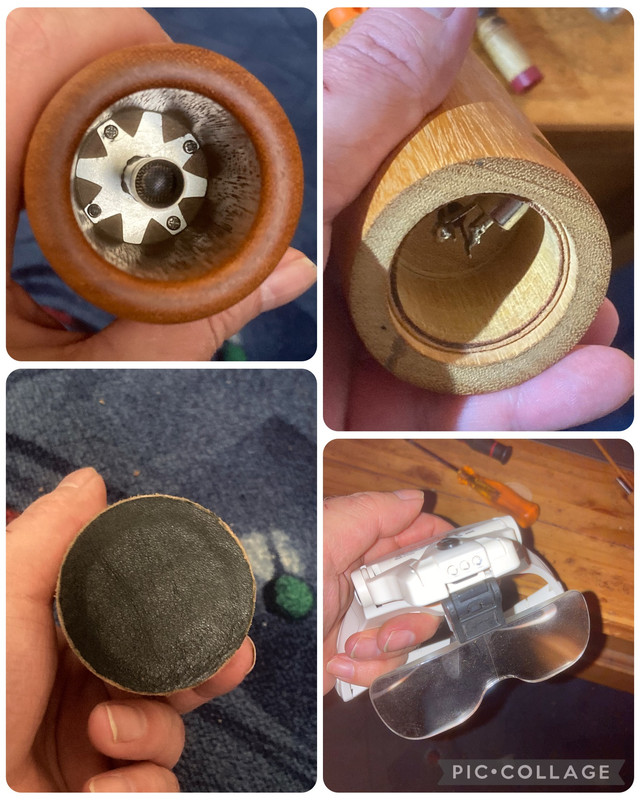
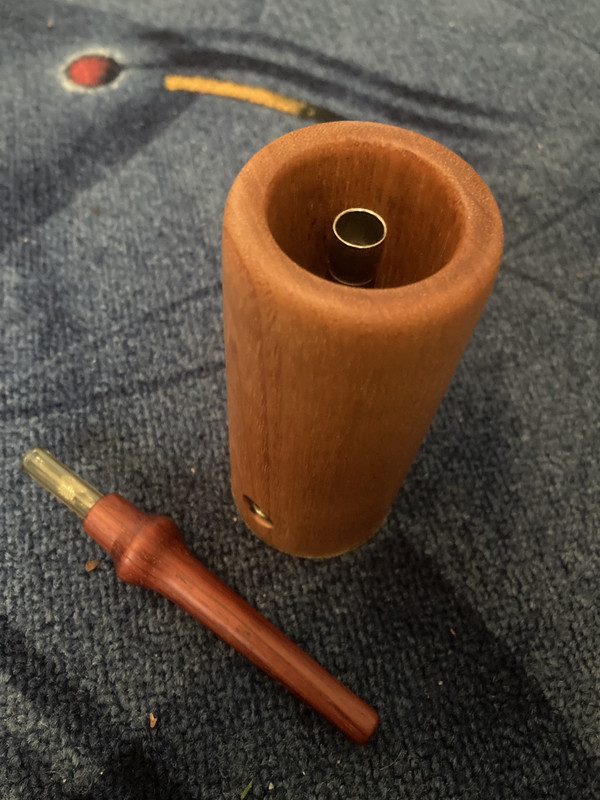

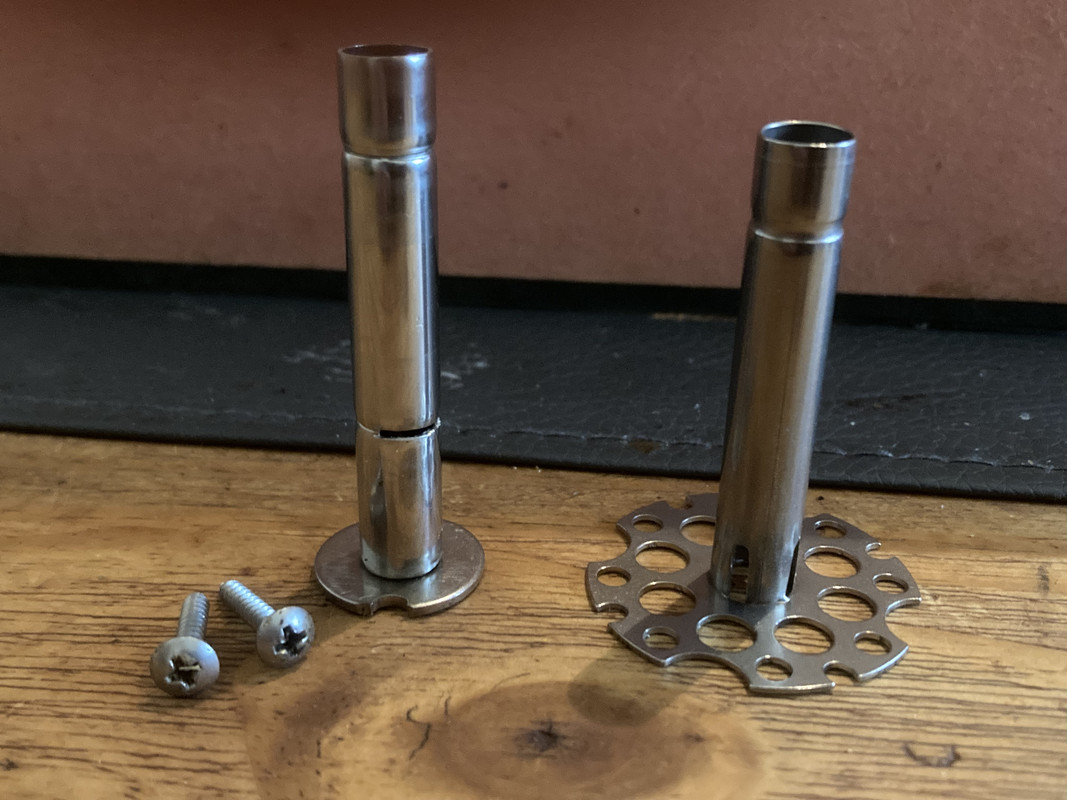
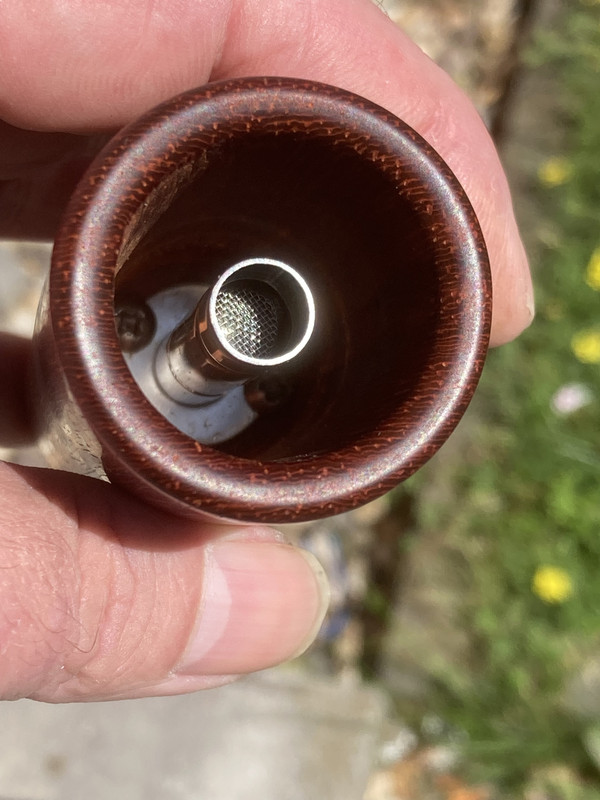
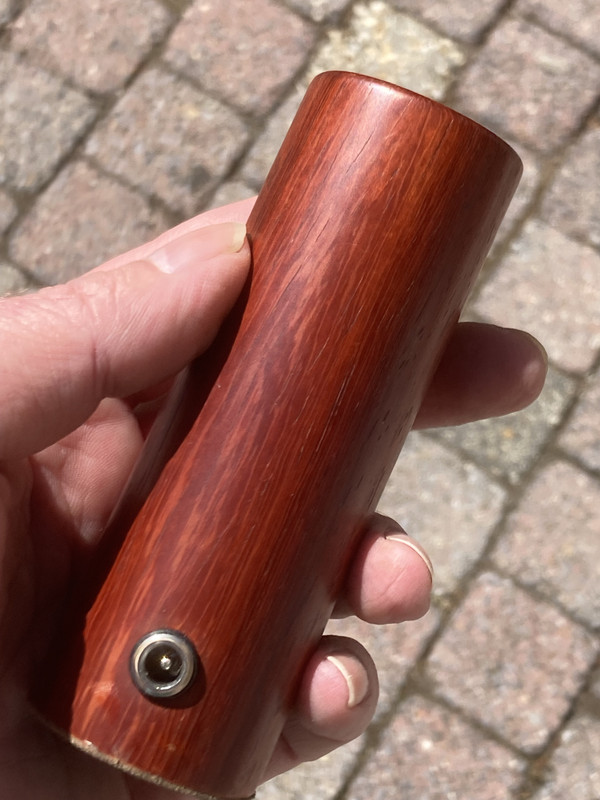


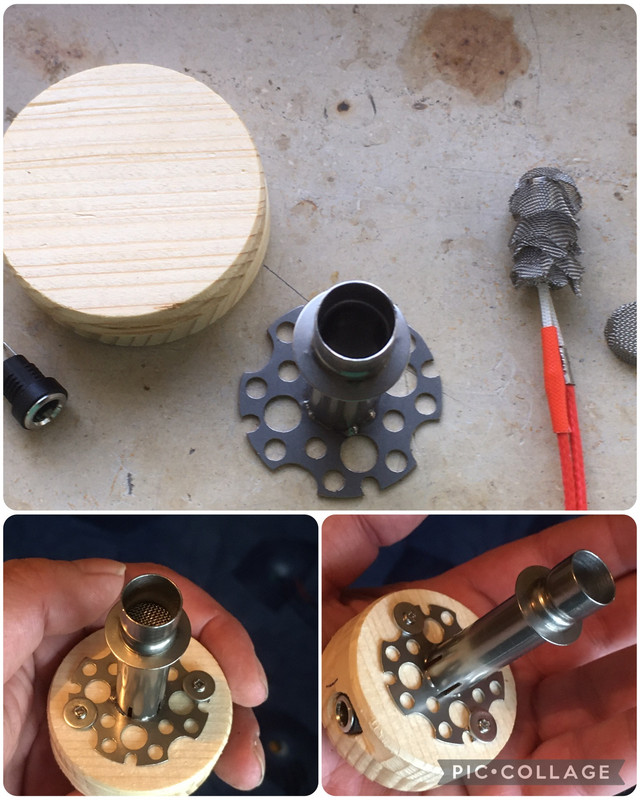

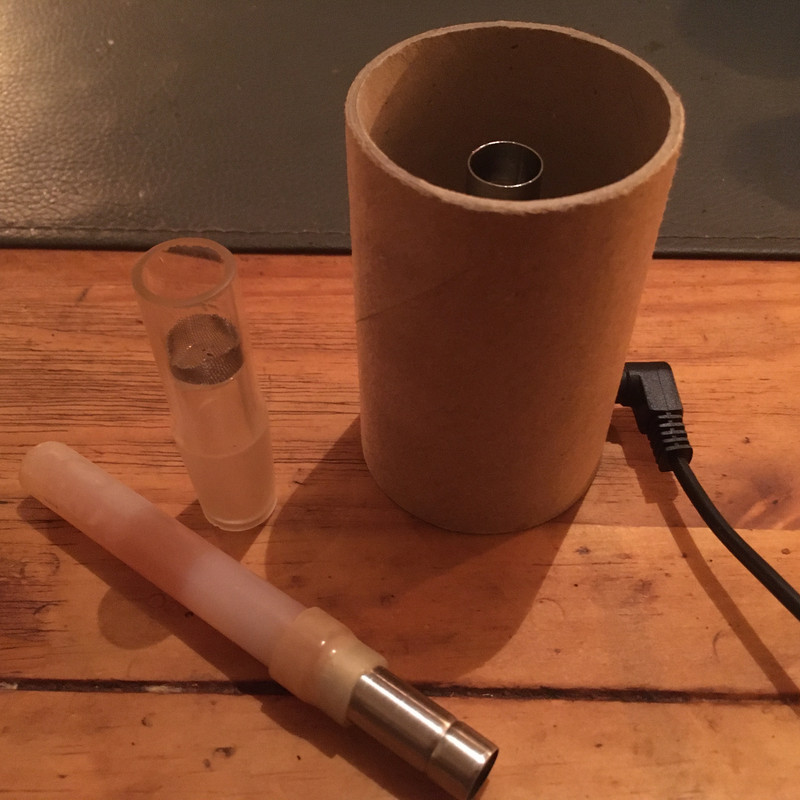

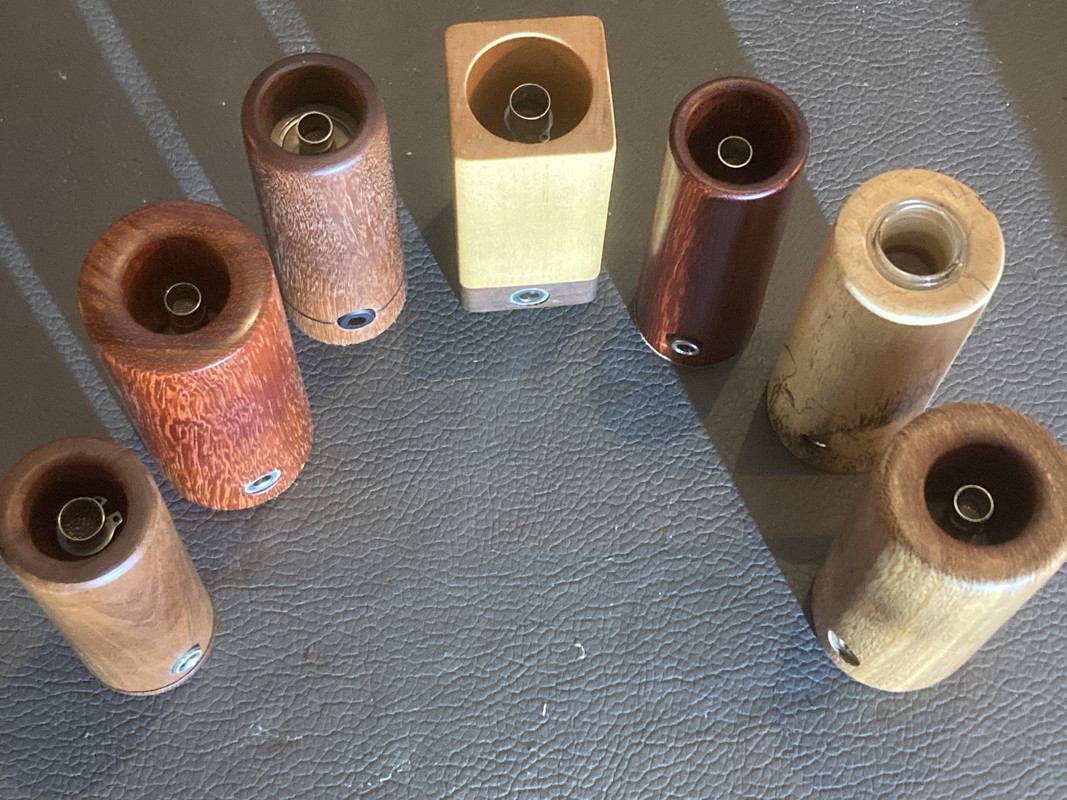
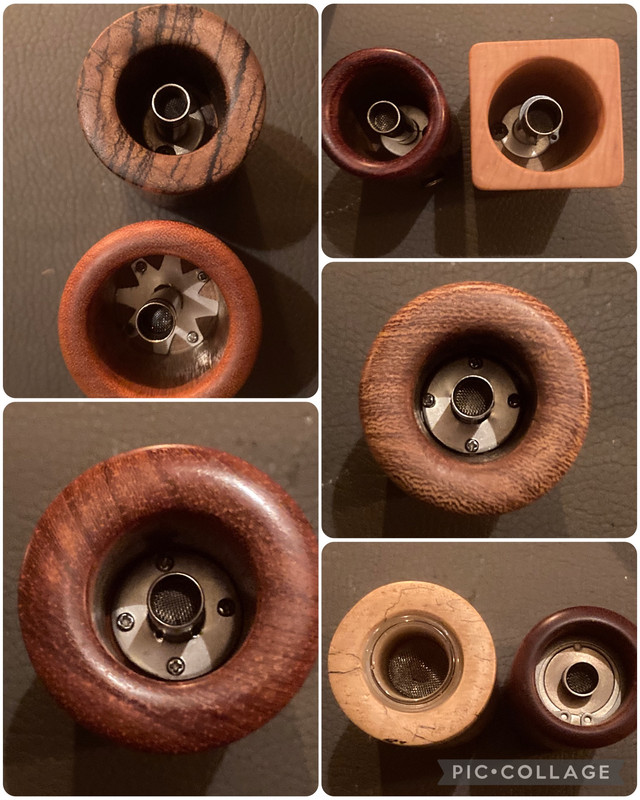
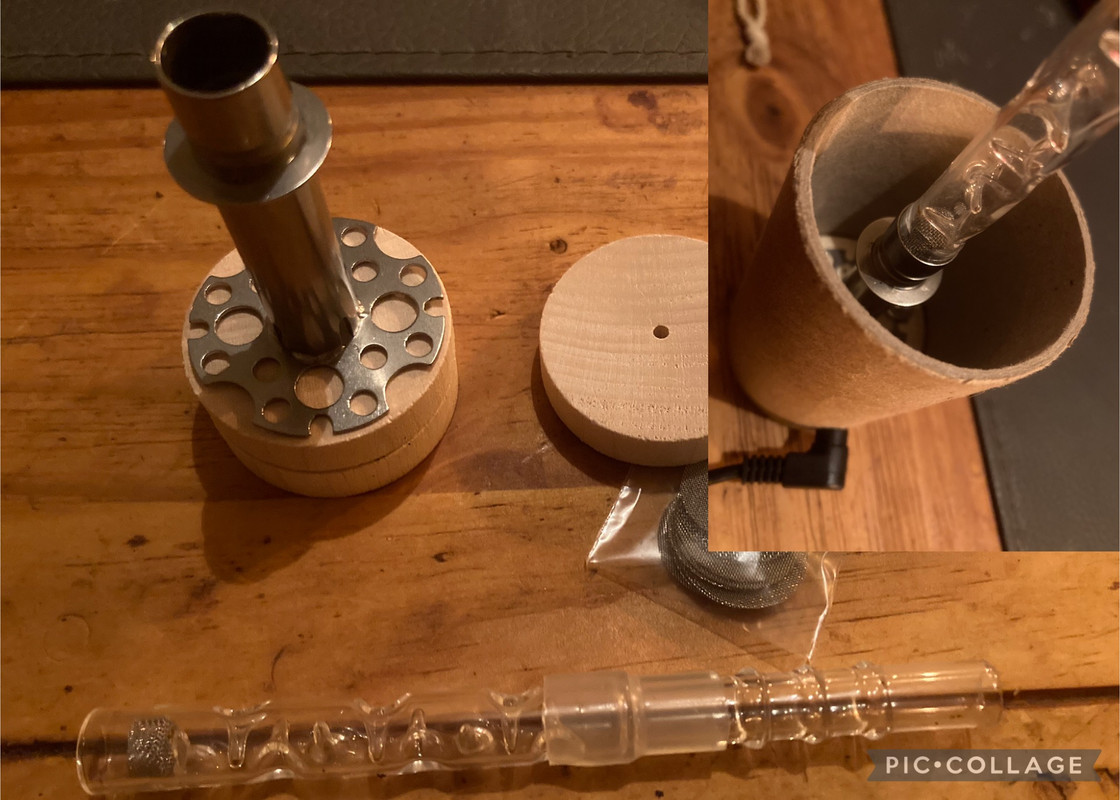


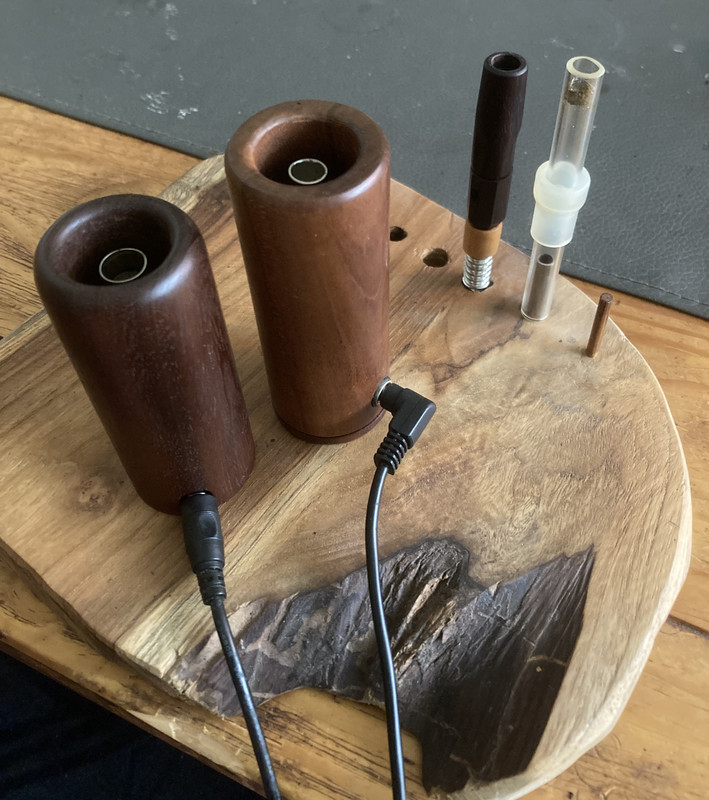
 .
.